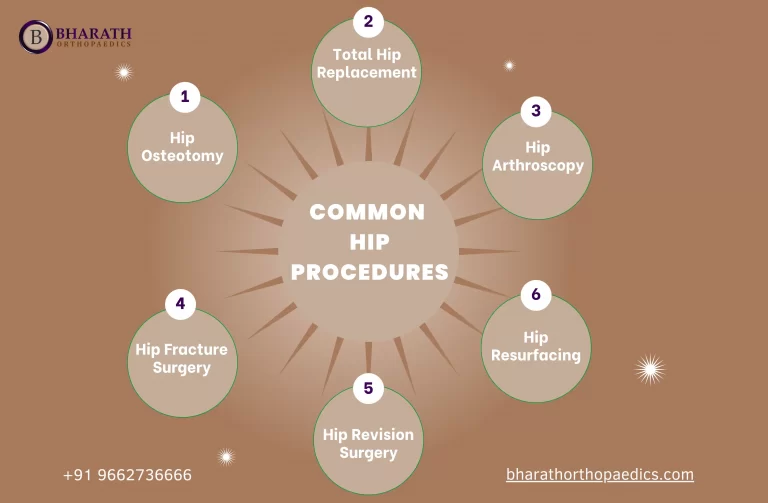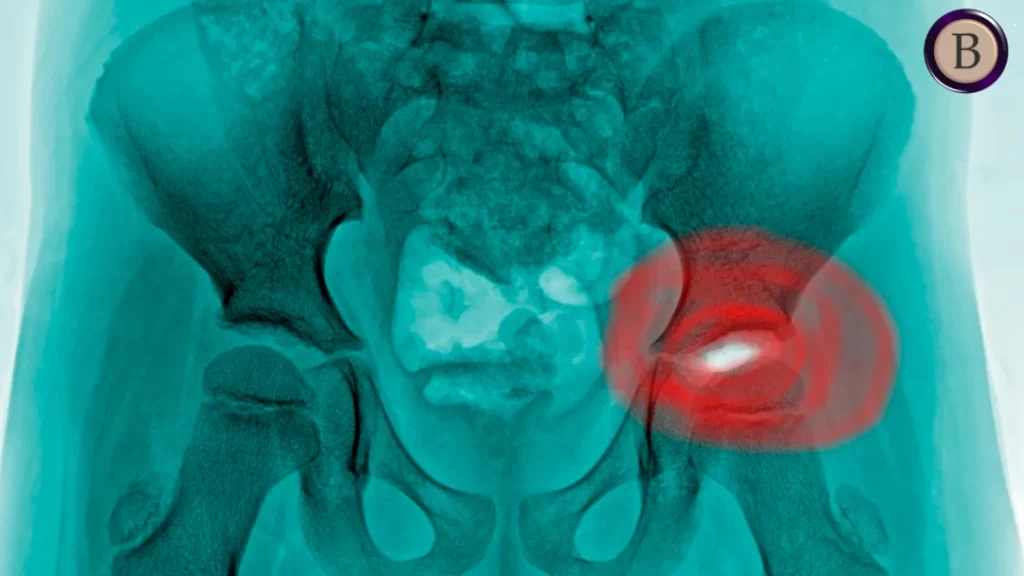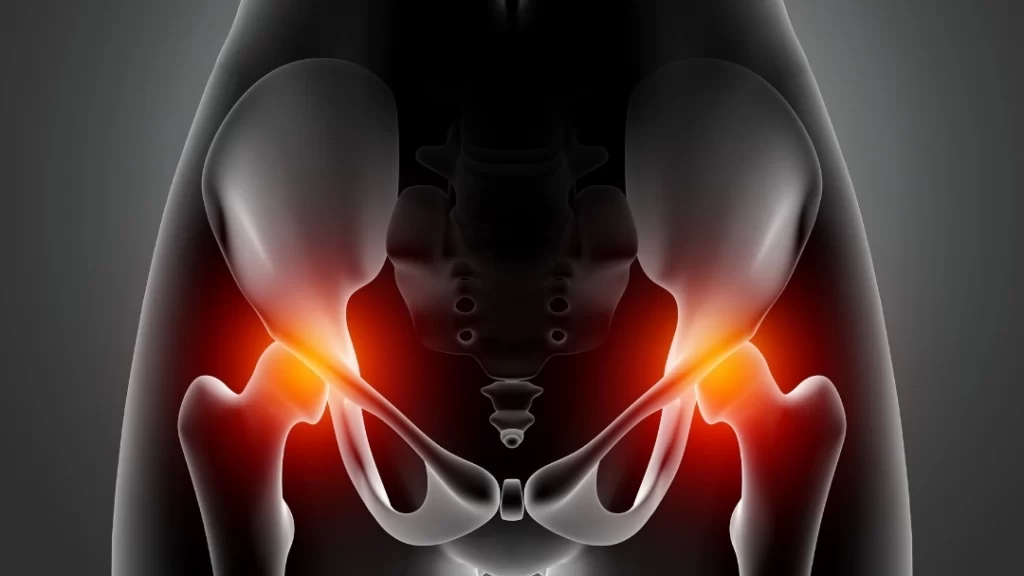Hip pain refers to discomfort or pain in the hip joint, which is located where the thigh bone (femur) meets the pelvis. The hip joint is a ball-and-socket joint that allows for a wide range of motion and is essential for many activities. As hip pain can significantly impact an individual’s mobility and quality of life, the patient should approach a healthcare professional to get the best hip procedures in Chennai.
Causes of Hip Pain
- Arthritis: The most common cause of hip pain, arthritis is the inflammation of the hip joint that can cause pain, stiffness, and reduced mobility.
- Bursitis: Inflammation of the bursae, small fluid-filled sacs that cushion the hip joint and reduce friction between the bones, can cause hip pain.
- Tendinitis: Inflammation of the tendons that attach muscles to bones can cause pain in the hip.
- Hip fractures: A broken hip can cause severe pain and require immediate medical attention.
What are the Different Hip Procedures or Hip Surgeries?
We specialize in the following Hip Surgeries & Hip Procedures in Chennai
1. Total Hip Replacement Surgery.
2. Partial Hip Replacement Surgery.
3. Revision Hip Replacement.
Total Hip Replacement Surgery
Total hip arthroplasty is a surgical procedure that requires hospitalization, anesthesia, and an operative exposure of the joint. During the procedure, the damaged bone and cartilage in the hip joint are removed and replaced with artificial components and durable plastics. This aims to improve mobility and reduce pain in the hip joint.

Total Hip Replacement Surgery (Hip Procedure)
- During the hip procedures in Chennai, an incision or cut is made over the hip and then the femur is dislocated from the acetabulum. The socket’s surface is cleaned, and the arthritic bone is removed using a reamer.
- Then, the acetabular component is inserted into the socket using the artificial components. Then the femur or the thighbone is prepared by ejecting the arthritic bone to make sure that it exactly fits the new metal femoral component.
- It is inserted either by using bone cement or a press fit. After this, the artificial femoral head component is placed on the femoral stem to ensure that all the new parts are placed accordingly using special cement. Later, the muscles, and the tendons around the new joints are repaired and the incision is closed.
Partial Hip Replacement Surgery
In this hip procedure in Chennai, an incision is made along the outer aspect of the affected hip. The surgeon removes the head of the femur using surgical instruments to prepare the femur to accept the prosthesis.
Partial Hip Replacement Surgery Procedure
In this hip procedure, an incision is made along the outer aspect of the affected hip. The surgeon removes the head of the femur using surgical instruments to prepare the femur to accept the prosthesis.
The stem of the metal prosthesis is inserted inside the femoral bone. A metal ball is connected to form the femoral head. If the patient is strong after the hip procedures in Chennai, healthy bone or cement can be press-fitted, whereas, for weak patients, osteoporotic bone is fitted.
The implantation methods depend on the patient’s age and the condition of the bone. Usually, patients with low demand quality of life and with more comorbid conditions are treated under this procedure. After the procedure, the incisions are closed with sutures, and a final dressing is applied.

Revision Hip Replacement
During total hip replacements, the damaged cartilage along with the bone are removed and replaced with artificial components, certain hip replacement implants may wear out or loosen from bone surfaces, depending on several reasons where the revision hip replacement surgery emerges.
Hip procedures in Chennai a complex surgical procedures where specialized components and bone graft material are required to rebuild the hip joints making them durable and functional again.

Revision Hip Replacement Procedure
The incision is made over the hip to expose the joint, and then the femur is dislocated from the acetabulum to remove the old plastic liner and metal socket. After that, the acetabulum is prepared using extra bone and wire mesh to shape and make up a space for the socket.
Then, special cement, or screws are used while a new metal shell is inserted. The top of the femur bone is cut into several pieces to remove the implants. After the hip procedures in Chennai, the segments are cleansed and a new femoral implant on the femur is inserted either by bone cement or a press fit.
The femur’s segments and the femoral components are joined together with the surgical wires. The femoral head component made of artificial metal or ceramic is then placed on the femoral stem.
All these new components are secured in a place to form a new hip joint. The muscles or tendons around the new joint are repaired and the incisions are closed.
Treatment Procedure
During the Hip Replacement Procedure
During hip procedures in Chennai, the patient is typically given general anesthesia to ensure they are unconscious and do not feel any pain or discomfort during the procedure. The surgeon makes an incision in the hip area to access the damaged hip joint. The damaged parts of the joint are then removed, including the head of the femur (thigh bone) and the damaged cartilage that lines the hip socket.
The surgeon then prepares the remaining bone surfaces for the new artificial hip components. These components are typically made of metal and plastic and come in various sizes to fit the individual patient. The artificial hip components are then securely implanted into the hip joint using special surgical cement or a porous coating that allows the bone to grow into the implant over time.
Once the new artificial hip joint is in place, the surgeon will test the range of motion of the joint and make any necessary adjustments to ensure proper alignment and stability. The incision is then closed using sutures or staples, and a sterile dressing is applied to the wound.
After the procedure, the patient is monitored closely in the recovery room to ensure they are stable and recovering well from the anesthesia. Pain medication is typically administered to manage post-operative pain, and the patient may be given blood thinners to prevent blood clots from forming in the legs. Physical therapy and rehabilitation programs are initiated soon after surgery to help the patient regain strength, mobility, and flexibility in the hip joint and improve overall hip function.
Post-Operative Instructions for Hip Replacement Patients
Post-operative instructions for hip replacement patients typically include the following:
- Pain Management: The patient will likely experience pain and discomfort in the hip area after surgery. Pain medications and anti-inflammatory medications may be prescribed to manage pain and swelling.
- Physical Therapy and Rehabilitation: Physical therapy and rehabilitation programs are critical for restoring hip function and mobility after surgery. The patient may be given exercises to perform to improve strength and flexibility in the hip joint.
- Ambulation: The patient will be encouraged to begin walking with the help of a walker or crutches as soon as possible after surgery. This can prevent further complications like blood clots and pneumonia.
- Wound Care: The patient will need to keep the surgical incision site clean and dry. The healthcare provider may provide specific instructions on how to change dressings and care for the incision.
- Follow-Up Appointments: The patient will need to follow up with their healthcare provider for regular check-ups and to monitor the healing process.
- Activity Restrictions: The patient may need to avoid certain activities, such as high-impact sports or strenuous exercise, for several weeks or months after surgery to allow the hip joint to heal properly.
It is essential for Hip Procedure patients to carefully follow post-operative instructions to ensure a successful recovery and minimize the risk of complications. Patients should contact their healthcare provider if they experience any severe pain, swelling, or other concerning symptoms after hip procedures in Chennai.
Signs you need a hip replacement
Signs that may indicate the need for a hip replacement include:
- Persistent Pain: Chronic hip pain that doesn’t improve with conservative treatments.
- Limited Mobility: Difficulty in performing daily activities due to restricted hip movement.
- Stiffness: Persistent stiffness, especially in the morning or after prolonged periods of inactivity.
- Pain at Rest: Discomfort even when at rest or during nighttime.
- Ineffectiveness of Non-Surgical Treatments: Lack of relief from medications, physical therapy, or other non-invasive interventions.
- Joint Degeneration: X-rays showing significant joint damage or arthritis.
Individuals experiencing these signs should consult with a healthcare professional to determine if hip replacement surgery is a suitable option.
Advantages of Hip Replacement
Hip replacement offers several advantages, including alleviation of chronic pain, improved joint function, and enhanced mobility. This surgical procedure often restores the ability to perform daily activities with greater ease. Patients typically experience an improved quality of life, increased independence, and reduced reliance on pain medications. Additionally, advancements in surgical techniques and materials contribute to the longevity and success of hip replacements, making them a beneficial option for those with hip joint issues.
What are the Different Types of Hip Replacement Surgery?
There are many types of hip replacement. They are also referred to as implants as they are used in a hip replacement operation including different ways of fixing them. Your hip replacement surgeon will explain the various options and recommend the most suitable one.
What is Hip Arthroplasty/Substitution?
Hip substitution is prescribed when the harm to the hip is extreme or when intense joint inflammation makes development troublesome. It will likely supplant the pieces of the hip that have been harmed to ease torment that can’t be controlled with different medicines. It very well may be an aggregate or halfway substitution, contingent upon how much the joint has disintegrated.
What is Hip Replacement Surgery?
Hip replacement is the evacuation and substitution of segments of the pelvis and femur (thigh bone) that structure your hip joint. It is performed principally to alleviate hip agony and solidness brought about by hip joint pain.
This procedure is likewise at times used to treat wounds like a messed up or inappropriately developing hip and for different circumstances.
Conclusion
To conclude, hip replacement surgery is generally safe and effective, there are risks and potential complications associated with the procedure, and patients should carefully weigh the benefits and risks with their healthcare provider.
Check out the best knee replacement surgeon in Chennai to consult with.

